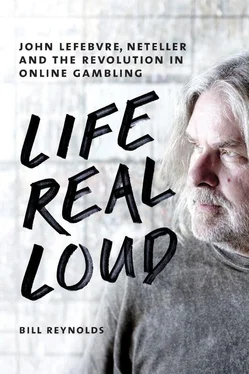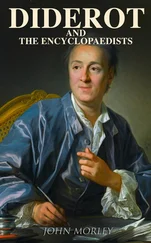Ahern listened to Lefebvre’s idea about getting it done in L.A. and told him it was probably for the best. Originally he had met Lefebvre through Patton. Ahern had produced a record by Beautiful Joe, a Calgary rock group Patton played in, which was a local success. Then Patton produced a Lefebvre demo tape at his own place, Airwaves Recording Studio, located in the converted garage in his backyard. It was just the two of them and drum programming, with a live drummer replacing those tracks at the end. It took all of two weeks to bang out before Lefebvre said, “Now what?” Patton sent a copy to Ahern. “He was the only famous guy I kind of knew that I had a phone number for.”
Lefebvre thought Patton was a bit nuts to believe a producer as credentialed as Ahern would be interested, but about six weeks later, in May 2006, Ahern phoned Patton back and said in his low rasp: “Danny. B.A. I think I can work with this guy.”
Patton thought there might have been some calculation: “He might have caught wind that John had some money.” But lucre wasn’t everything to Ahern, and he warned Patton, “If it’s horrible I’m not doing it.” But there was no need to worry. “It’s not like John quit lawyering and decided to learn how to play guitar,” says Patton.
In August, well before the bust, the two of them had flown to Toronto to meet Ahern, who had some work scheduled there at that point. That’s when they started to discuss studios, musicians, and locations.
Ahern had an unorthodox idea about how to record Lefebvre. He figured the guy might get spooked playing with all these fabulous name musicians, and so to ensure tranquility he lobbied to record at either the Salt Spring house or Malibu 2. It was the home birth versus hospital birth idea. That was before Judge Gorenstein in New York made the decision for them.
Patton recalls, “Then we all met in Salt Spring in January 2007, just before John got busted.” Actually, Patton and Lefebvre flew down to L.A. in the first week to meet Ahern and then they all flew back to Salt Spring. Lefebvre was aware that the heat had been turned up and was worried about getting popped as soon as he got off a plane. But nothing happened. Only later did it become clear why the FBI was waiting.
After the bust, Ahern phoned Patton to kvetch. “Well, of course I heard from Brian right away. I don’t know if he was more worried about his gig or John. ‘Ooooowwww, he’s in jail. Danny, what’s going on?’ I said I just knew as much as what he knew,” says Patton.
Ahern’s self-interest was understandable. He didn’t know Lefebvre from The Dude, but a lucrative gig he’d lined up now looked like it had vaporized. He probably wasn’t familiar enough with Lefebvre at this point to know the truth: once the guy got an idea in his head, he was not easily deterred. Confined to the central region of California, the bail terms severely reduced Lefebvre’s options, of course, but a guy who’d always been a free spirit put on his bravest face. Being hemmed in by a sprawling L.A. still equaled freedom of movement, to a degree. For instance, it would not be okay to head north and cross the border to see his mom in Calgary, but it would be okay to jump on the Ducati and ride east to Joshua Tree National Park. So he tried to keep himself in a stoic, glass-half-full kind of equilibrium, thinking, Well, I’ve been meaning to see the desert anyway .
And Lefebvre’s thoughts about the upcoming recording sessions were analogous. His choices were limited to L.A., L.A., or L.A. Yeah, so, what’s your point? There was no stopping him — the recording sessions were happening. So they looked all around L.A. before Lefebvre finally asked, “Well, Brian, what’s the best studio in town?” Ahern said, “Oh, the best — the best is the Village Recorder in West L.A.”
That suited Patton. He’d always thought Ahern’s idea of bringing the studio to the musician — whether it was building one on Salt Spring or setting up the foam on Malibu Road — was nuts. The best studios and the best musicians in the world are in L.A., so why reinvent? He’d never said a word to Ahern about it, but he was relieved when they settled on the Village. Not squawking was probably a good move on Patton’s part, because when Lefebvre wanted Patton to be there at the sessions as his confidant, Ahern agreed.
Ahern chose the Village because of a tip. He was friendly with T Bone Burnett, who mentioned to him in passing, “Yeah, I’m finishing up in Studio D, so it’s open.” Ahern phoned in March and secured the booking — Studio D, Monday to Friday, four weeks, June 2007. Lefebvre had his studio and his advisor, so he told Ahern to invite whomever else he wanted. “I called the best in the country,” said Ahern. Big names accepted Ahern’s offer to play with Lefebvre, pop and rock musicians of considerable pedigree, people such as Al Kooper and Glen D. Hardin.
And so Lefebvre’s new plan — to spend an entire month recording at the Village — started to come into focus about a month before he emailed me with his “living the dream!” line. By then he was in full-glass mode. When Monday, June 4, rolled around, his first day on the job, Lefebvre reveled in the How-Crazy-Is-This opportunity he had created for himself. He was as ready as could be. He had hired Elvis’s old piano player, Hardin, to transcribe and chart all the tunes for the band. He had taken singing lessons. Ahern had set him up with a microphone and headphones in Malibu 2 to simulate the studio setup so he wouldn’t tense up when the actual recording started. There were plenty of times during that first day, during the entire month, when he forgot that his liberty had been compromised.
* * *
Like Screaming Lord Sutch, the fake English earl who hobnobbed with famous rock musicians such as Jimmy Page and John Bonham in the late sixties, Lefebvre set himself up to play with the best. He might have been internet royalty, a rich man who could afford to hire a Svengali and a bunch of hot musicians to play with him in a famous studio, but, unlike Sutch, he was a half-decent musician who wrote a batch of half-decent songs. The challenge was, except for his work with Karen Fowlie a decade earlier, Lefebvre was a studio neophyte. Yet he played the good pupil, applied himself, and learned under Ahern’s guidance — but not always without protest. During one of the last sessions, in late June, Ahern suggested a specific change in direction on a tune. “Okay,” Lefebvre pouted. “After all, it is your album, Brian!”
“Hey, it’s my reputation on the line here,” parried the man with the music industry bona fides and enviable address book.
The relationship between Lefebvre and Ahern drove the sessions — not quite master-slave and not quite employer-employee, somewhere in between. Lefebvre told Ahern he wanted candles to create a spooky twilight atmosphere while singing: “It’s way cooler that way, Brian.” That was okay with Ahern — anything to make the guy feel more comfortable.
Ahern hired a Nashville-based photographer and musician named Rick Clark to shoot the sessions, and he was in the candlelit room adjusting an old RCA microphone for a shot. Lefebvre stood, hands on headphone cans, emoting and looking like an old Waterbed Warehouse ad that ran for years on Calgary television. “Brian,” Lefebvre said, while Clark set up the tripod, “stay here for the shot, will you? You make me look less fat.”
Ahern couldn’t let that go. He came back to this dig a few times during my stay. “John, do I really look fat?”
“Well, okay Brian, let’s say you make me look normal.”
The comment wasn’t tactful, but it was accurate. Ahern was one Everest of a man. Beside it, Lefebvre’s gut was a bunny hill.
* * *
My hanging-out-with-the-rich-guy time was over, and Patton’s Cinderella Syndrome was about to kick in. On Friday, June 29, 10:50 a.m. PST, I was in the air flying back to Toronto. When I was about three-quarters of the way home, Lawrence entered Judge P. Kevin Castel’s courtroom, 12C, in Manhattan, this time for a 3:45 p.m. EST appointment for his plea. Peter Neiman, his lawyer, and two WilmerHale colleagues, Shane Stansbury and Steve Bero, were with him. U.S. Attorney for the Southern District of New York Michael J. Garcia was there for the government, along with Assistant Attorneys Timothy Treanor and Chris Conniff. FBI Special Agent Tim Dinnen was on hand. Lawrence was about “to enter a plea to an information.” At one point the judge asked Lawrence to describe in his own words what he did that he now believed set him afoul of the U.S. government.
Читать дальше












